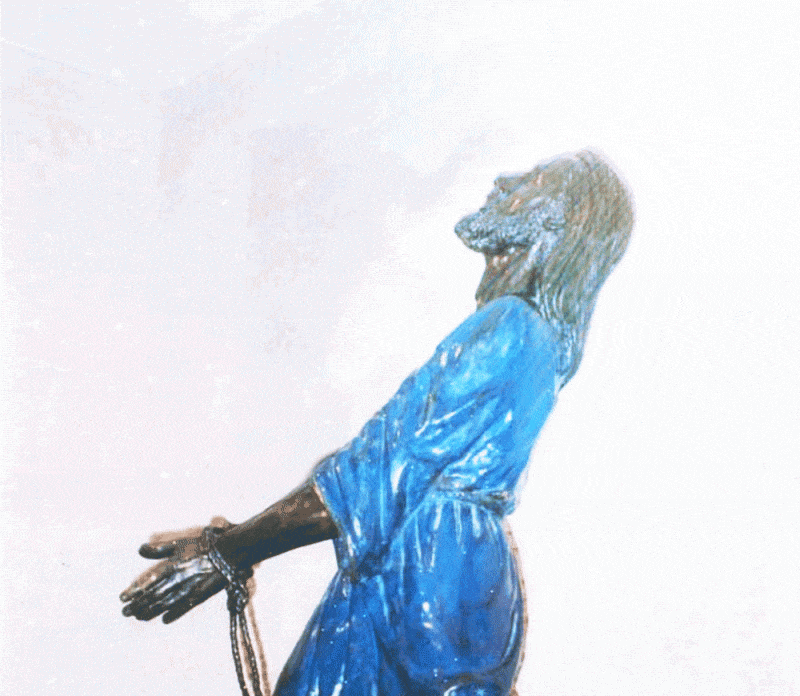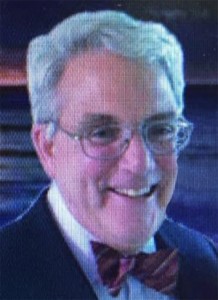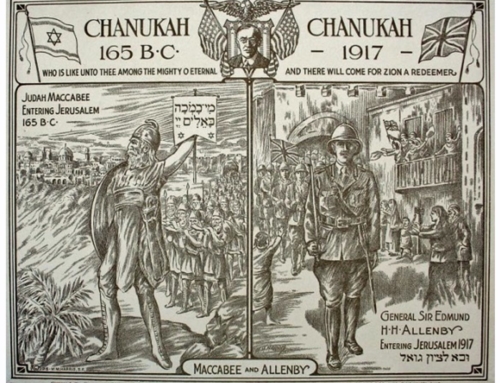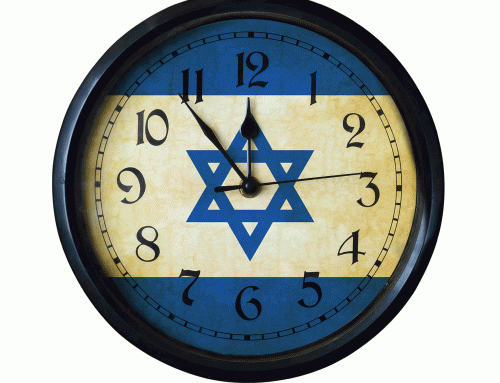By John David Pitcher Jr., MD
Recently a renewed interest in the trial of Yeshua (Jesus is his English name) has occurred. ‘Rabbi’ Ariel Cohen Arollo is an Orthodox Jew who while not an official rabbi believes he must help facilitate the Second Coming of Yeshua. Rabbi Ariel has identified Yeshua throughout the Hebrew Scriptures and would like to reintroduce Yeshua to the Jewish people in a highly controversial ambition involving gematria, and he would like to restage a retrial in order to return Yeshua to the Jewish people in accordance with Isaiah 1:17. He is proposing the “traditional Pidyon haBen” ceremony – the “Redeeming of the Firstborn Son” – to welcome the Messiah. (http://jerusalemchannel.tv/…/video-second-trial-jesus-not-…/ ; http://mobile.wnd.com/…/retrial-for-jesus-new-campaign-lau…/ )
Humbly, on the behalf of Paul the Apostle, I would like to present an Amicus Curiae [friend of the court] briefing for the retrial from the findings of the Oldest Midrash. It has recently been discovered as embedded in six of Paul’s letters, perfectly preserved in the New Testament to present new evidence in the case previously unconsidered. Previously unappreciated by scholars is the fact that Paul took over 1,300 words out of the Greek translation of the Hebrew Scripture’s first six books (the Hexateuch in the Septuagint, LXX) and placed them in order in six of his letters (Hebrews, Galatians, Romans, 2 Timothy, 1 Timothy, Titus) as the framework of what I’ve entitled “The Oldest Midrash, The Identity of the Messiah.” (http://jerusalemchannel.tv/greatest-literary-discovery-tim…/ )
Time does not permit me to elaborate fully the findings for the retrial, so I’ll focus on 13 significant findings providing links to each proving the innocence of Yeshua from the Apostle Paul’s Midrash and identifying Yeshua as Messiah and that his death on the Cross was planned from the foundation of the world to bring mankind back to a right relationship with God. This Midrash [commentary], recently discovered, provides new evidence within the context of a Jewish Midrash that Yeshua was not guilty of blasphemy but was beloved and bound by the Father to satisfy the punishment of sin. Like Rabbi Ariel’s initiative, this Amicus is not associated with any specific Christian denomination or mission agency as it is a Jewish finding in the New Testament that truly belongs to the Jewish people. No fees have been received in preparation of this brief.
I’ve included an artistic rendition of a bronze sculpture entitled Servus Domini by Richard Shiloh in the Church of St. Peter in Gallicantu –the site where the Messiah was detained following his arrest in the Garden of Gethsamene. Bound in a dark prion overnight, he could have brought light and freedom to himself, but he chose the path of humiliation so that those who believe in him would not have to face the penalty for our own sin.
Perhaps never done before in an Amicus are the final two significant findings: two events yet to occur. They are included to substantiate the validity of this brief. All 13 findings are original and discovered through Jewish Midrash in a different perspective to enrich the judicial decision making process in this most important question of widespread significance. I’ll conclude the brief with words from Luke a fellow physician written in the First Century and preserved in the New Testament that it was necessary for the Messiah to be executed in the manner he was.
A Friend of the Court Brief (Amicus Curiae)
1) From the Torah, it is Messiah that redeems the one held captive. It was the pre-incarnate Messiah, the Word of God, sharper than any two-edged sword, who fought the battle for Abram to redeem Lot. The duty of Pidyon Shvuyim, “redemption of captives,” has been fulfilled in Messiah, foreshadowed by the battle with the four kings and fulfilled at Calvary on Golgotha. (http://jerusalemchannel.tv/great-mitzvah-fulfilled-messiah/ )
2) The Beth Essentiae in Exodus 6:2-3 is explained by Paul in his Midrash. El Shaddai is: God who provides transformational change within a person’s life and brings blessing; One with YHWH, and appeared to Abraham, Isaac, and Jacob; The man in linen in Ezekiel’s vision with the voice of El Shaddai who is bringing holiness to Jerusalem at a time when men who devise iniquity give counsel that “The time is not near to build houses” and “This is the cauldron, and we are the meat”; The eye witness source and only explanation of how Moses obtained the Genesis account. Through first Person narrative, the use of the name YHWH was used by El Shaddai and recorded in the pages of Genesis that the Patriarchs worshipped YHWH though not known by face. The name of El Shaddai is associated with a transformational (naming or name-changing) personal relationship with God, release from the captivity of sin. El Shaddai is the pre-incarnate Messiah. (See “God In Person, El Shaddai”)
3) Moses annotated the Messiah would be rejected with two “Inverted Nuns” surrounding Numbers 10:35-36 and Scripture identifies him as Yeshua the Messiah. The use of the final “Inverted Nun” in Psalm 107:40 is unfolded by Hosea in Hosea 14:1-9: Israel will soon accept the Messiah and will say “Return” (cf. Hosea 14:1; not ‘Come’) to us!”, leading up to the quotation of Hosea 14:9 that also ends the psalm in Psalm 107:43: “Who is wise, that he may understand these things? Who is prudent, that he may know them? For the ways of the LORD are right, and the righteous walk in them; but the rebellious stumble in them.” The “Inverted Nuns” annotate the “Rejected Messiah” and Scripture identifies him as Yeshua the Messiah. The persons identified in the A portion of Psalm 107 are further identified in the A’ portion of the psalm’s structure. (http://jerusalemchannel.tv/youre-accepted-messiah-rejected/ )
4) Yeshua the Messiah, the Light of the World, whether by night or by day, was born of a betrothed virgin for which a surety was paid to bring reconciliation between God and man. (The controversy of Isaiah 7:14 is solved through Midrash by Paul’s use of two quotations from Psalm 110 with slightly different wording.) His English name is Jesus the Christ. His Hebrew name is Yeshua the Messiah. He, in fact, is the Servant that Isaiah speaks of later in his prophecies and David in Psalm 110 and his guarantee for those that would come to him, the Son beloved and bound by his Father, is the empty tomb, that is, his Resurrection. (http://jerusalemchannel.tv/closed-mem-womb-virgin/ )
5) The Son of God pre-incarnate Messiah known as Melchizedek is the same person as the Messiah genetically who would come as a baby 2000 years later. Paul indicates the uniqueness of the High Priest, sharing humanity. So does the Messiah share humanity with his Creation. God’s plan for the Messiah wasn’t an afterthought, but a well thought out plan requiring the patient endurance of the promise. “Priest King Yeshua the Messiah is the same as Melchizedek, King of Jerusalem, Priest of the Most High God.” (http://jerusalemchannel.tv/genetics-man-controversy/ )
6) Mary’s mother was of the line of Levi because Elizabeth was her cousin (Luke 1:36) and both Elizabeth and Zachariah, the parents of John the Baptist, were of the lineage of Levi (Luke 1:5). Of note, Aaron married Elisheba, a daughter in the lineage of Judah (Numbers 7:12), so every priest had some of the bloodline of Judah although later the Law stipulated that the priest was not to intermarry (Leviticus 21:14). (Although Mary was a Levite on her mother’s side, this would have not qualified Yeshua to be a High Priest under the Law but that qualification is associated with his pre-Incarnate appearance as Melchizedek and further delineated by David in Psalm 110.) The identity of the Messiah is identified in part in the first use of his name in the LXX. He is our Mediator of the lineage of both High Priest and King and is the perfectly sanctified and anointed High Priest and King who has won the battle to bring those that believe in him into the place of rest. He is the LORD our Banner. (http://jerusalemchannel.tv/yeshua-priest-king/ )
7) By quoting Isaiah 54:1, Paul identifies where the events of Isaiah 52:13-53:12 took place like Isaiah did before him in a prophetic manner. The “Barren One” of Isaiah 54:1 and Galatians 4:27 can be conclusively identified as Mount Golgotha, in Jerusalem. Many more are the children of right-standing before God from the event that took place on Golgotha, namely the sacrifice of the Messiah for the purification from sin for those that believe in him than the children of right-standing before God from the Law that was given from Mount Sinai for the purification from sin for those that keep the Law. (http://jerusalemchannel.tv/barren-mountain-children/ )
8) Messiah clearly willingly took upon himself the judgment of those that would willingly bow to him, as the Passover Lamb. They receive grace in all their journeys. By using the word “crucify”, a sole use word in the LXX, Paul points to its use in Esther 7:9. This is the intersection between the Jewish celebration of Purim and the Feast of Passover. Yeshua the Messiah has taken judgment that he will place on all that would put their trust in Him and willingly bow to him and accept his grace for their lives and become a new creation. (2 Corinthians 5:17) All others must bear their own punishment. (http://jerusalemchannel.tv/intersection-purim-passover/ )
9) Messiah as High Priest with the single sacrifice of his life upon the Cross purified his believers from sin, washing their sin away like a mighty Flood, and having done it on the exact day appointed from the dawn of history, sat down at the right hand of God. This changes those that believe in Messiah so much so that others approach them in order to align themselves with them and Messiah. (See “An Appointment to Sit on the Throne.”)
10) The words of strengthened Israel at the end of his life before his sons are both historic and prophetic as told through Midrash by Paul in the letter to the Hebrews. Yeshua the Messiah appeared throughout the Genesis account as El Shaddai and the Angel of the LORD, and is the King, the Mighty One of Jacob, the Shepherd, the Stone of Israel, the God of Israel. He is unchanging. He is the same yesterday, today and forever. (http://jerusalemchannel.tv/words-strengthened-israel/ )
11) Paul makes a descriptive statement regarding the Hebrew Scripture saints he has enumerated in Hebrews 11, the “Faith Chapter”. It is often overlooked but you can look for it yourself in Hebrews 11:40: “…apart from us they should not be made perfect.” The Hebrew Scripture saints described in the “Faith Chapter” are “dead in Messiah” and will rise first along with those Christians that have believed in Messiah. (1 Thessalonians 4:16) The Messiah will find faith on the earth. And the children of Israel will be faithful to return to their brother, Yeshua the Messiah foreshadowed in the life of the children of Israel to return to their brother Joseph! (http://jerusalemchannel.tv/i-am-your-brother/ )
12) Simply stated, Korah’s rebellion is an antithetical foreshadowing of the Rapture and Paul pulls out all the stops, using the most persuasive form of reasoning with all three of the main components of rhetoric to leave his family persuaded in the Resurrection of Yeshua the Messiah at the future event of the Rapture. (See “The Flying of the Righteous”)
13) The falling of the mantle, the sheepskin off of those believing in the Messiah and raptured is foreshadowed in the life of Elijah. The double portion of the spirit of Elijah falling onto Elisha is a foreshadowing of the children of Israel who have not yet recognized their brother, Yeshua the Messiah. They will at the event of the Rapture receive a double portion of the spirit of Elijah onto them. Elijah foreshadows those that will be raptured believing in Messiah. Elisha foreshadows those to whom a double portion of the same Spirit that is within believers in Messiah will fall onto after the Rapture, the children of Israel. All Israel will be saved. (Romans 11:26) (http://jerusalemchannel.tv/articles/page/3/ )
There is perhaps no greater summary of the facts than those gathered by Luke the physician and recorded in Luke 24:13-49 after the crucifixion and Resurrection of the Messiah (World Messianic Bible):
13 Behold, two of them were going that very day to a village named Emmaus, which was sixty stadia from Jerusalem. 14 They talked with each other about all of these things which had happened. 15 While they talked and questioned together, Yeshua himself came near, and went with them. 16 But their eyes were kept from recognizing him. 17 He said to them, “What are you talking about as you walk, and are sad?”
18 One of them, named Klofah, answered him, “Are you the only stranger in Jerusalem who doesn’t know the things which have happened there in these days?”
19 He said to them, “What things?”
They said to him, “The things concerning Yeshua, the Nazarene, who was a prophet mighty in deed and word before God and all the people; 20 and how the chief priests and our rulers delivered him up to be condemned to death, and crucified him. 21 But we were hoping that it was he who would redeem Israel. Yes, and besides all this, it is now the third day since these things happened. 22 Also, certain women of our company amazed us, having arrived early at the tomb; 23 and when they didn’t find his body, they came saying that they had also seen a vision of angels, who said that he was alive. 24 Some of us went to the tomb, and found it just like the women had said, but they didn’t see him.”
25 He said to them, “Foolish men, and slow of heart to believe in all that the prophets have spoken! 26 Didn’t the Messiah have to suffer these things and to enter into his glory?” 27 Beginning from Moses and from all the prophets, he explained to them in all the Scriptures the things concerning himself. 28 They came near to the village where they were going, and he acted like he would go further.
29 They urged him, saying, “Stay with us, for it is almost evening, and the day is almost over.”
He went in to stay with them. 30 When he had sat down at the table with them, he took the bread and gave thanks. Breaking it, he gave it to them. 31 Their eyes were opened and they recognized him, then he vanished out of their sight. 32 They said to one another, “Weren’t our hearts burning within us, while he spoke to us along the way, and while he opened the Scriptures to us?” 33 They rose up that very hour, returned to Jerusalem, and found the eleven gathered together, and those who were with them, 34 saying, “The Lord is risen indeed, and has appeared to Simon!” 35 They related the things that happened along the way, and how he was recognized by them in the breaking of the bread.
36 As they said these things, Yeshua himself stood among them, and said to them, “Peace be to you.”
37 But they were terrified and filled with fear, and supposed that they had seen a spirit.
38 He said to them, “Why are you troubled? Why do doubts arise in your hearts? 39 See my hands and my feet, that it is truly me. Touch me and see, for a spirit doesn’t have flesh and bones, as you see that I have.” 40 When he had said this, he showed them his hands and his feet. 41 While they still didn’t believe for joy, and wondered, he said to them, “Do you have anything here to eat?”
42 They gave him a piece of a broiled fish and some honeycomb. 43 He took them, and ate in front of them. 44 He said to them, “This is what I told you, while I was still with you, that all things which are written in the Torah of Moses, the Prophets, and the Psalms, concerning me must be fulfilled.”
45 Then he opened their minds, that they might understand the Scriptures. 46 He said to them, “Thus it is written, and thus it was necessary for the Messiah to suffer and to rise from the dead the third day, 47 and that repentance and remission of sins should be preached in his name to all the nations, beginning at Jerusalem. 48 You are witnesses of these things. 49 Behold, I send out the promise of my Father on you. But wait in the city of Jerusalem until you are clothed with power from on high.”








Leave A Comment